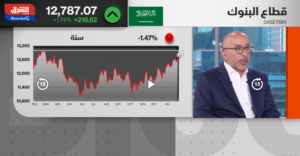Data scientists are competing with traditional statisticians, and big data analysis is now competing with the study of statistic samples. This change mirrors a wider paradigm shift in the conception of society and what rules its structural dynamics.
If facts happen in a two-axis world, it is likely that will distribute in a Gaussian bell curve, with most happenings concentrated around the average. This is predicated on the idea of society. In a “mass society”, everybody behaves the same and Gauss rules.
Different people are rare and extreme, and society is described as a bell curve. However, it appears that in an interlinked “network” society, facts distribute in a “Power Law graph” (a ski-jump shape), in which the concept of average is vacuous.
This applies to our understanding of the internet, where studies of the number of links to specific web pages soon demonstrated that the same pages were attracting more links. And that with the growth of the network, it was more and more likely that new pages would link to those pages.
In such a network, some nodes became hubs, and other pages were only destinations. The number of links to pages followed the “Power Law”, and one could predict that the dynamics would bring about a polarization of resources.
Distortions from the average
The same phenomenology applies to finance and real estate investment in Dubai. Having a statistic that says the average prices of real estate is falling doesn’t really illuminate the discourse, because it obscures the fact that there are distribution patterns within communities as well as within buildings and localities that are showing a rise in prices.
The power law also explains why an increasing amount of transactions are focusing on a single developer, indicating a preference regardless of the price statistic. In such a society, we start to see patterns where both International City prices (a lower mid-income community) is rising as much, if not more, than a higher end community such as the Palm. And why Jumeriah Village (a mid-income community) prices are rising, whereas those in Sport City (another mid-income community) are falling.
At one level, this is explained by the differential build quality or the different set of incentives that one set of developers have over another. However, at base, this can simply be explained by the “network effect”, whereby each incremental launch only serves to accentuate the popularity of a community (whether it is the same or not).
Optimization becomes the easiest effect (just as soap bubbles serve to optimize surface area). And allocation of resources move along the paradigm where it is most probable for those asset prices to rise. This then becomes a feedback loop where differentials become increasingly large and polarization is the norm.
In a network society, the fundamental assumptions are quite different, where all characters are linked and co-evolve, because a change in one character affects others. In such a society, the average doesn’t predict much, and scholars need a different fundamental pattern.
The mass society is an idea of the past, but the network society is a challenge for the future. This has profound implications for how data analysis is done at the granular level. Synthesis of this data has to be done in a way that illuminates understanding, such that it can determine decision-making.
Living off the past
The analyst community seems to be regurgitating the ideas of the past, sticking to terms such as “actualization” rates, and “average prices”, which are devoid of any meaning for valuation as well as transactions, because it fails to account for this underlying fundamental pattern that suggests polarization is unavoidable.
If finance and real estate is only one big market, then the winner takes all. But if there are different rules for different subsets, then it ensures that there will be less concentration of resources and therefore less systemic risk.
What these different rules are will be part of the framework that Dubai’s real estate committee will lay out in the weeks and months ahead. However, the contagious cynicism that has been engendered has not reflected some of the underlying dynamics on the ground.
Part of the problem lies squarely with the output of data analysts. Moore’s law has been useful for those who share the “tech” narrative of the exponential growth of computers.
In the same way, the power law is useful for those who want to critically study the evolution of markets such that the output of these studies are made more relevant in the society that we live in.
– Sameer Lakhani is Managing Director at Global Capital Partners.





